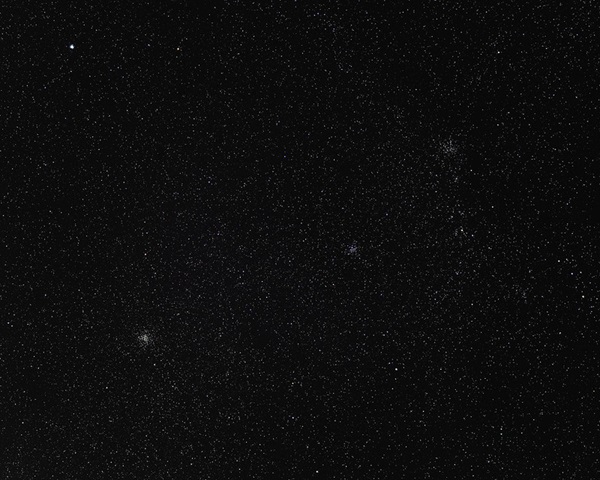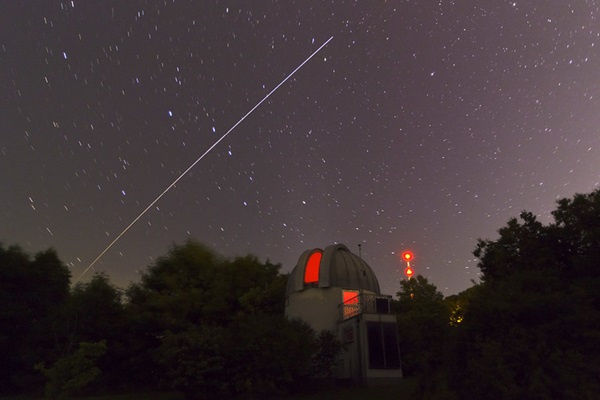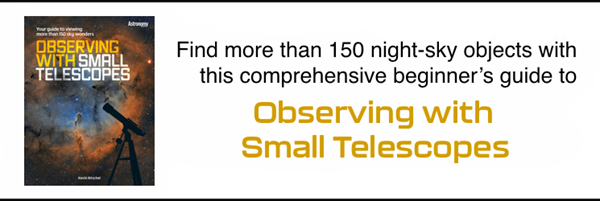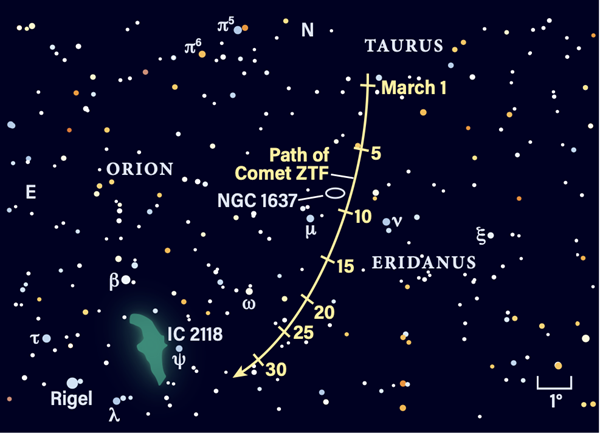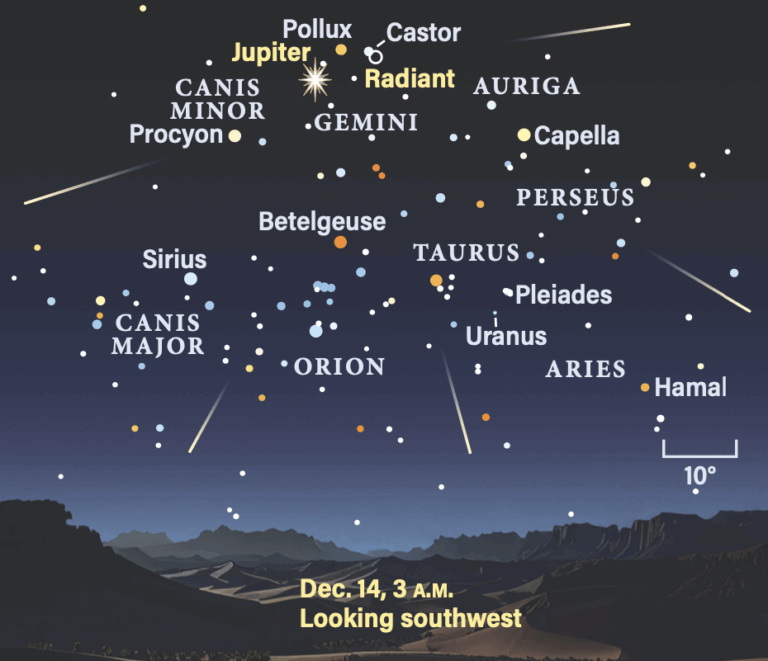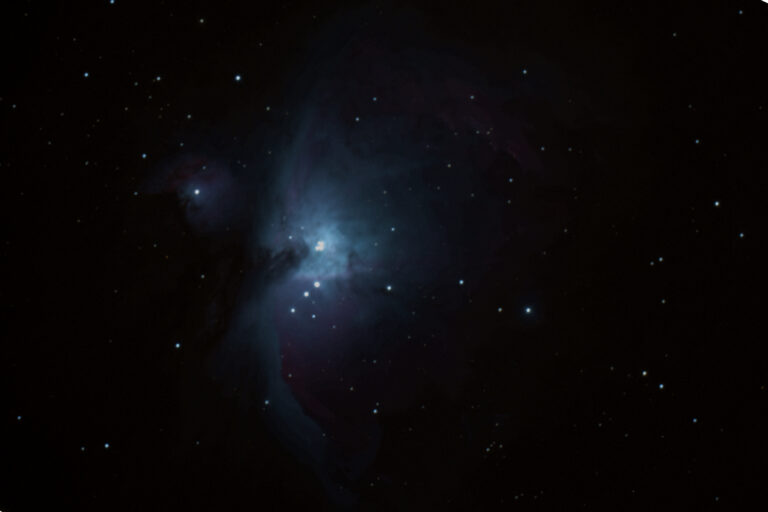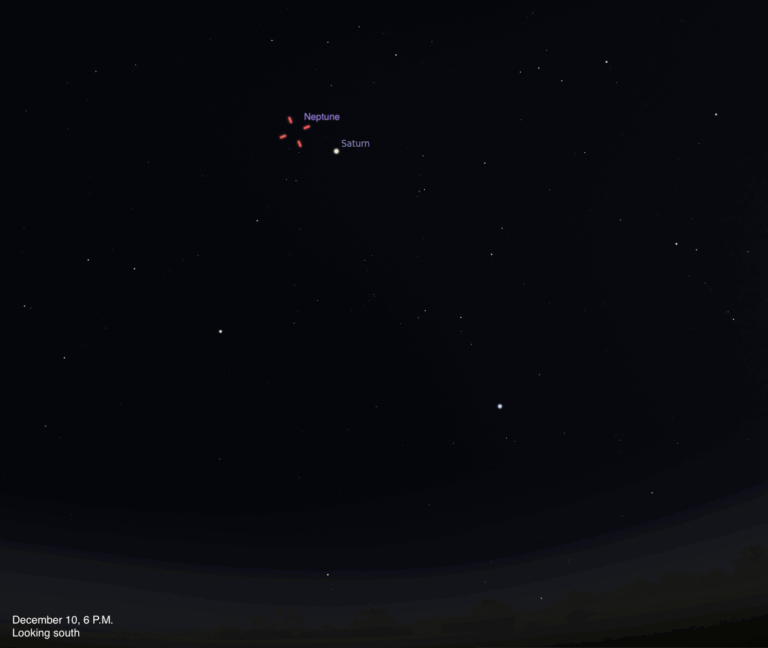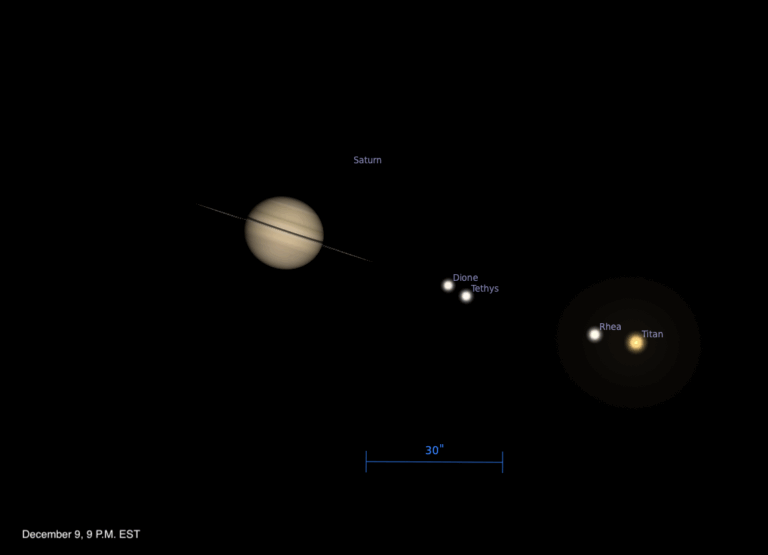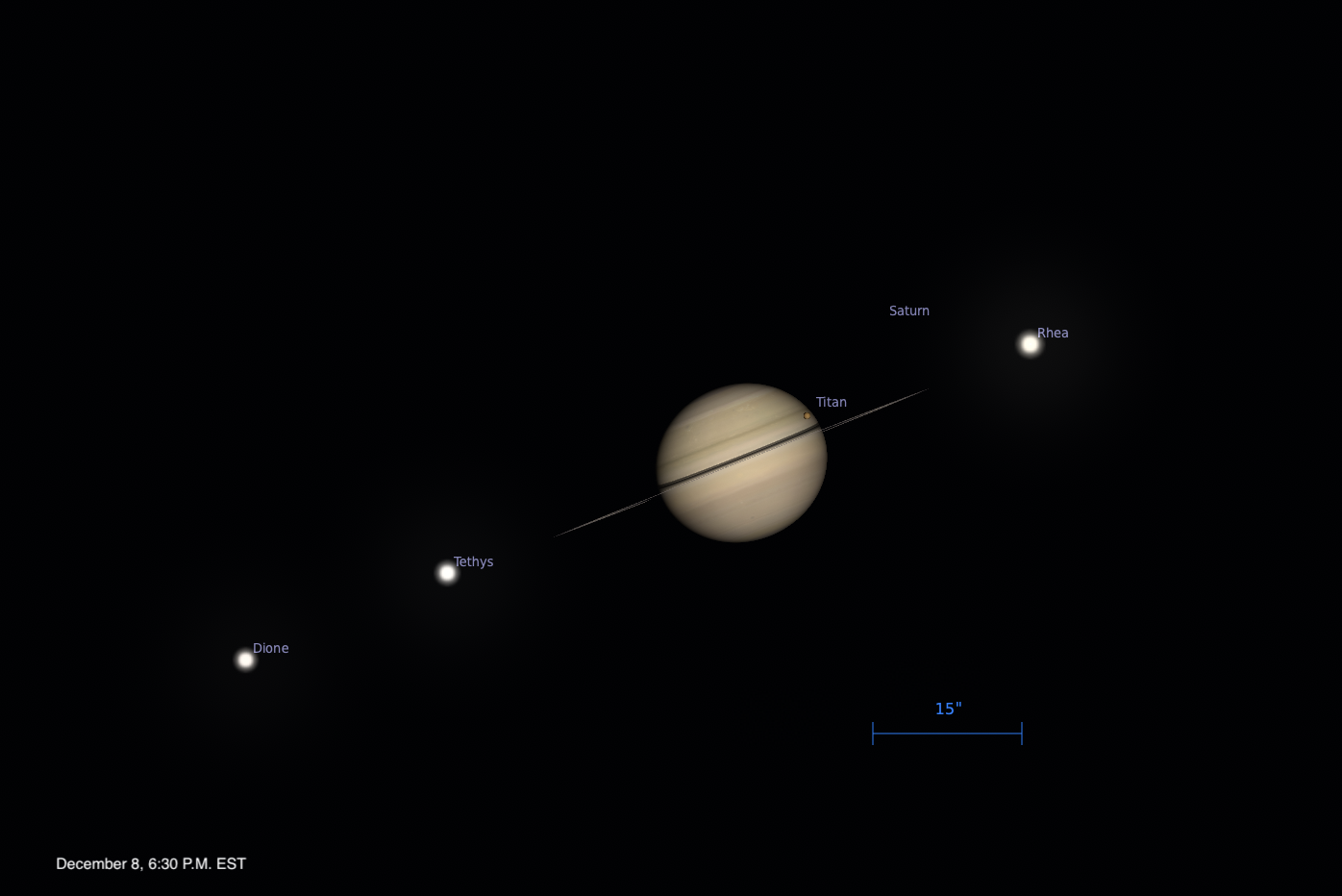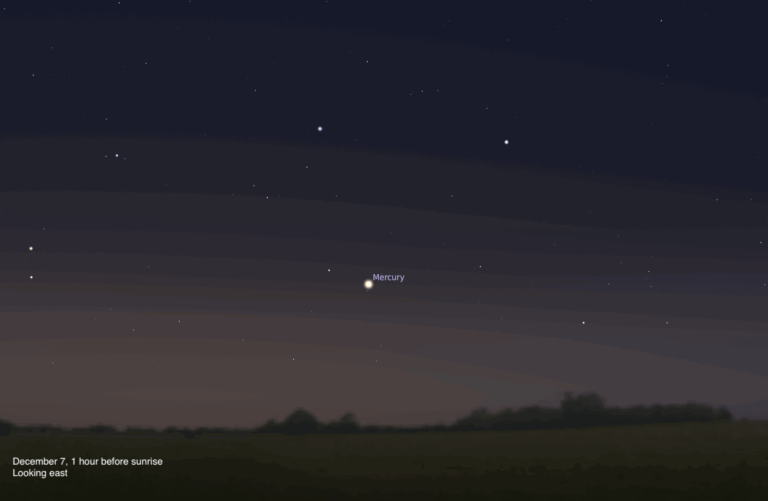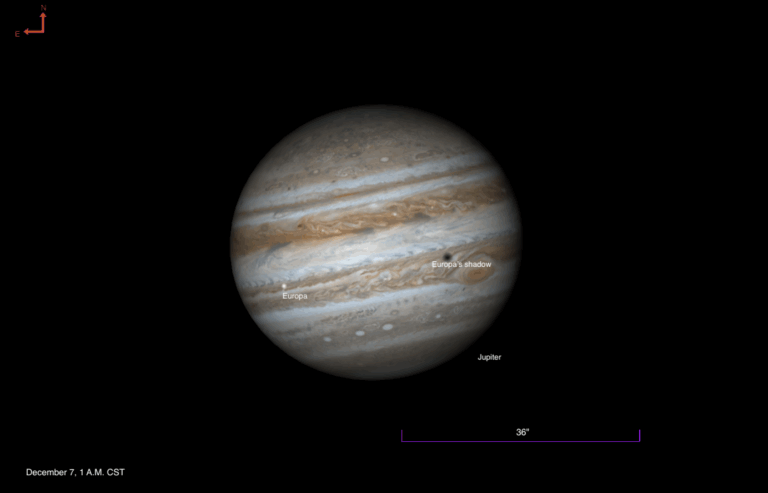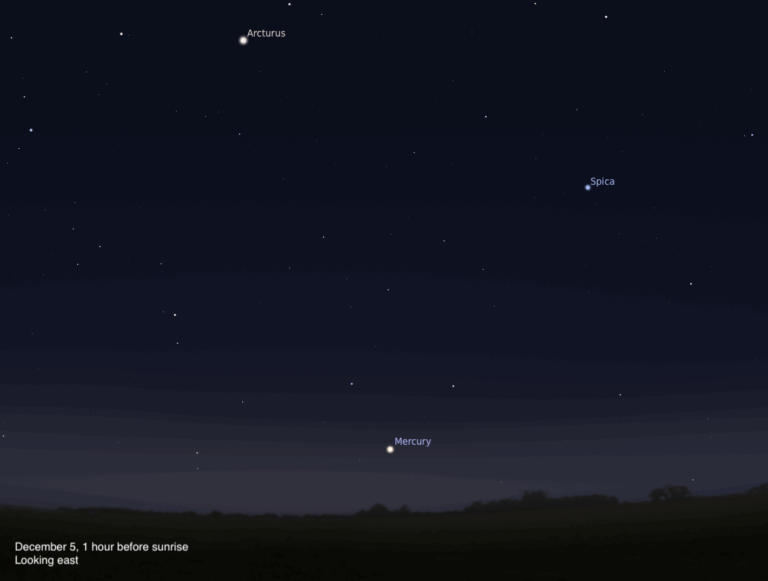Key Takeaways:
Friday, March 3
The Moon reaches apogee, the farthest point from our planet in its orbit, at 1 P.M. EST. At that time, our satellite will be 252,207 miles (405,888 kilometers) from Earth.
Magnitude 0.4 Mars is still prominent in the evening sky, standing more than 70° high an hour after sunset. The Red Planet sits near Elnath, the tip of one of Taurus’ two horns, some 4° southwest of that star and 20° almost directly above Betelgeuse in Orion. Farther down, 27° below Betelgeuse, is the blazingly bright star Sirius.
Through a telescope, Mars spans 8″, making identification of its surface features challenging. Around 7 P.M. in the Midwest, the dark blotch of Mare Sirenum may be visible, as well as the ligher-colored peak of Olympus Mons.
Sunrise: 6:30 A.M.
Sunset: 5:54 P.M.
Moonrise: 2:09 P.M.
Moonset: 4:54 A.M.
Moon Phase: Waxing gibbous (87%)
*Times for sunrise, sunset, moonrise, and moonset are given in local time from 40° N 90° W. The Moon’s illumination is given at 12 P.M. local time from the same location.
Saturday, March 4
The American Association of Variable Star Observers celebrates Propus (Eta [η] Geminorum) as March’s variable of the month. At this time of year, the Twins are already high above the eastern horizon at sunset. The constellation’s two brightest stars, Castor and Pollux — magnitude 1.6 and 1.2, respectively — shine brightly in the falling dark. Procyon, the magnitude 0.4 nose of the Little Dog, lies to their lower right, while to its lower right is Sirius, the brightest star in the sky.
At the feet of Gemini stands Orion, whose three-star belt and hourglass-shaped body are easy for most observers to pick out. Propus lies nearly 16° north-northeast of Betelgeuse, the red giant sitting at Orion’s shoulder. For a closer signpost, use 3rd-magnitude Mu [μ] Geminorum — Propus lies just under 2° west of this star.
Astronomers first recorded the red giant Propus as a variable star in the 1860s. Its magnitude varies between 3.3 and 3.9 over the course of about two-thirds of a year (234 days). And nearby is an added bonus: The 5th-magnitude open cluster M35 sits just over 2° northwest; binoculars or a wide-field view, such as that through a finder scope, will net you both at the same time.
Sunrise: 6:29 A.M.
Sunset: 5:55 P.M.
Moonrise: 3:11 P.M.
Moonset: 5:29 A.M.
Moon Phase: Waxing gibbous (93%)
Sunday, March 5
Early risers this morning can catch a flock of “wild ducks” flying across the starry sky. Cataloged as M11 and NGC 6705, the Wild Duck Cluster in Scutum is readily visible in the hours before sunrise, climbing as the hours tick by. Around 5:30 A.M. local time, the cluster is some 30° high in the southeast, just off the tail of Aquila the Eagle. Locate 3rd-magnitude Lambda Aquilae, then slowly scan about 4° west-southwest to land on M11.
At magnitude 5.8, M11 is visible to the naked eye from a good, dark site (it’s best to try before the sky begins to brighten with the first hints of dawn). Spanning some 14′, the Wild Duck Cluster is a rich, compact group of nearly 3,000 young stars that sits an estimated 6,000 light-years away. The cluster’s name comes from the V-shaped pattern formed by its brightest members — though if you want to see this likeness, tune out the fainter stars by opting for binoculars or a small scope over anything larger. With too much power, those faint stars wash out your ability to discern brighter pattern.
Sunrise: 6:27 A.M.
Sunset: 5:56 P.M.
Moonrise: 4:13 P.M.
Moonset: 5:58 A.M.
Moon Phase: Waxing gibbous (97%)
Monday, March 6
The International Space Station (ISS) circles Earth about once every 90 minutes. As it passes over a given location, its exterior reflects sunlight downward, making the ISS visible as a bright spot slowly moving across the sky in a matter of minutes, much like any other artificial satellite.
This evening at 5:45 P.M. CST, the ISS will cross over the Midwest, appearing as bright as magnitude –3.3 when it reaches its maximum altitude of 61°. The space station will first appear in the northwest, moving through Ursa Major, Ursa Minor, and Draco before sliding through Cygnus and Aquila to set in the southeast. It will remain visible for about 10 minutes, starting out around magnitude –1 and brightening quickly, but then fading dramatically after its maximum and ending its journey around magnitude 1.3. You can get more details about the pass on heavens-above.com; in the upper right-hand corner, enter your specific location to ensure the pass is visible and find out more about how long and how high the ISS will appear.
For additional tips on how to best see the ISS from your backyard, check out this article.
Sunrise: 6:26 A.M.
Sunset: 5:57 P.M.
Moonrise: 5:15 P.M.
Moonset: 6:23 A.M.
Moon Phase: Waxing gibbous (99%)
Tuesday, March 7
Full Moon occurs at 7:40 A.M. EST. The March Full Moon is also sometimes called the Worm Moon. Tonight our satellite rises just after the Sun sets, still showing off its bright face.
Full Moon is not necessarily the best time to observe fine detail because the Sun is directly overhead from the viewpoint of the lunar landscape, eliminating most shadows. The Moon also appears brightest through a telescope, disrupting night vision even if you only observe it for a brief moment. But because the Full Moon is so bright, it also makes it difficult to observe much else in the sky!
A Full Moon does show off the geological differences readily visible across Luna’s face without a telescope, though. The large, dark splotches are smoother terrain composed of ancient lava flows; they’re called maria, or seas, though they never held water. These regions are also younger — relatively speaking — than the rugged, bright terrain of the lunar southeast, which have been pockmarked by numerous craters over time. The largest and most obvious is Tycho, whose long rays stretch as far north as the Sea of Serenity.
Sunrise: 6:24 A.M.
Sunset: 5:58 P.M.
Moonrise: 6:16 P.M.
Moonset: 6:46 A.M.
Moon Phase: Full
Wednesday, March 8
Now about a week after their conjunction, let’s check on Venus and Jupiter in the evening sky. Shortly after sunset, the two planets hang one above the other in the west. Blazing Venus (magnitude –4.0) is higher, sitting nearly 25° above the horizon. Directly below it is magnitude –2.1 Jupiter, some 17° high. The planets are now separated by nearly 7°, a far cry from their close encounter of less than a degree last week.
Through a telescope, 13″-wide Venus now appears 84 percent lit; Jupiter, some 2.6x as wide, is fully illuminated and shows off its Great Red Spot as it sinks toward the horizon. The huge storm is rotating onto visible face of the planet around sunset in the Midwest and will cross the center of the disk shortly after 7 P.M. CST (after the planet has set on the East Coast). Flanking Jupiter are all four of its Galilean moons: Callisto sits farthest west, with Europa close to the planet’s western limb, while Io and then Ganymede hang from closest to farthest in the east. Observers in the western portion of the U.S. will be able to watch Europa disappear behind Jupiter around 7:10 P.M. MST.
Sunrise: 6:23 A.M.
Sunset: 5:59 P.M.
Moonrise: 7:19 P.M.
Moonset: 7:08 A.M.
Moon Phase: Waning gibbous (99%)
Thursday, March 9
With some two hours between sunset and moonrise this evening, use your time wisely to enjoy a triple treat in Auriga the Charioteer.
This constellation is particularly easy to find after dark because of its bright luminary, magnitude 0.1 Capella. The star sits high in the northwest an hour after sunset and guides us to our quarry: the three open clusters M36, M37, M38.
Let’s start with M38, which lies just over 10° south-southeast of Capella and roughly halfway on a line drawn between Theta (θ) and Iota (ι) Aurigae in the southern part of the constellation. This 7th-magnitude open cluster is easy to enjoy in binoculars or any small scope, spanning about 20′ of sky. From this cluster, jump 2.3° southeast to land on M36, a brighter (6th magnitude) and more compact open cluster whose diameter is roughly half that of M38’s. Note that in M36, you’ll spot only white or golden-yellow stars — it has no red giants, unlike its neighbors M38 and our next target, M37.
You’ll find 6th-magnitude M37 about 3.7° east-southeast of M36. This is the largest and richest of the three clusters; M37 spans about 22′ and contains at least 150 stars brighter than mid-12th magnitude.
Sunrise: 6:21 A.M.
Sunset: 6:00 P.M.
Moonrise: 8:21 P.M.
Moonset: 7:29 A.M.
Moon Phase: Waning gibbous (95%)
Friday, March 10
Comet C/2022 E3 (ZTF) may no longer be snagging major headlines as it begins to fade, but it’s not out of the game just yet. Located relatively high above the horizon after dark, ZTF has been recently recorded at 8th magnitude — still easy to snag with a small telescope. Studying the comet’s shape should show a short but broad fan-shaped tail still emanating north, while the southern part of the coma has a sharper edge.
An hour after sunset this evening, ZTF is some 40° high in the southwest, near the northeastern edge of Eridanus the River. It’s located almost exactly midway between two 4th-magnitude stars: Mu (μ) Eridani to the east and Nu (ν) Eridani to the west. As a bonus, the 11th-magnitude barred spiral galaxy NGC 1637 sits just 10′ northeast of the comet today. This beautiful target should have a brighter center and a fainter, more diffuse disk that appears nearly face-on.
Come back tomorrow to see ZTF slide 0.5° due south of NGC 1637. From there, the comet will swing southeast, approaching the Witch Head Nebula (IC 2118) by the end of the month. That will be an astrophoto you won’t want to miss!
Sunrise: 6:19 A.M.
Sunset: 6:01 P.M.
Moonrise: 9:26 P.M.
Moonset: 7:50 A.M.
Moon Phase: Waning gibbous (90%)

